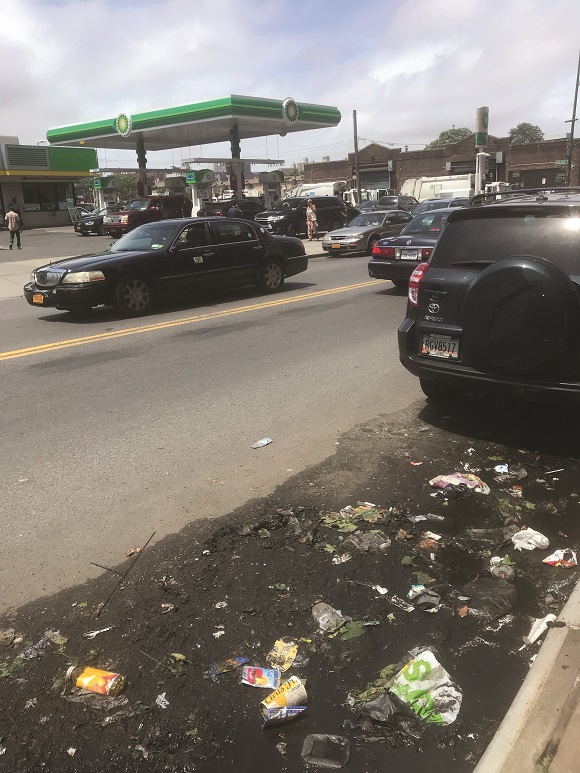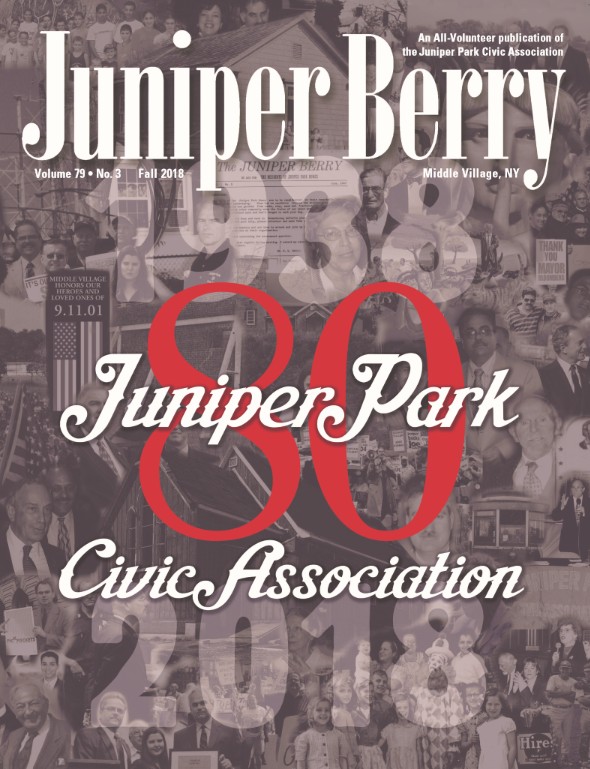The headline of QNS reporter Ryan Kelley’s article published July 23rd reads: “City DOT takes two years to resolve complaints about a broken guardrail on a Maspeth street”. Having called in hundreds of 311 complaints over the years, this sounded all too familiar to me. In this particular case, a 2016 concern about a damaged guardrail along a road running parallel to the LIRR tracks was not addressed by the Department of Transportation until two years had passed, after Kelley obtained correspondence between State Assembly Member Catherine Nolan and Queens DOT Commissioner Nicole Garcia. It’s amazing what a little publicity can accomplish!
Three options
There are 3 ways to report problems to the City of New York: using the 311 phone app, making a phone call or entering the info via the 311 website. The 311 phone app has its advantages and its disadvantages. One of the disadvantages is that not every issue can be reported via the app. One of these issues would be an illegal building conversion. That can only be phoned in or entered via nyc.gov/311. However, all you receive in return when you call or enter a complaint online is a confirmation number, which you then have to follow up on by researching it online or calling 311 again. After a certain amount of time has elapsed, those complaints seemingly “expire” meaning you can no longer check their status. But the archive of complaints you’ve generated using the 311 app appears each time you pull up the app, and it indicates each complaint’s status and exactly what the reported problem was no matter how long ago it was made. Some issues that can be reported via the app include potholes, tree issues and litter.
Unresolved complaints
So, what have I noticed by using this tool? A whole lot of complaints go unresolved or unanswered for months and sometimes years. A pothole I reported on Christmas Day 2015 is still marked “open” with the following response: “You can expect an update here within the next 24 hours”. Meanwhile, three St. Stephen’s Days have come and gone since then and there’s been no update posted. The pothole eventually got repaired after I entered another complaint.
Two complaints reporting damage to street trees dated 7/20/16 and 6/7/2017 are still open. Building graffiti reported 8/25/17 is still there but the complaint was never addressed. The response to my 10/21/16 request for homeless assistance says, “Due to an integration error, the City was not able to create your Service Request.” The app suggested the request be made again, but the unfortunate person had moved on by the time I had noticed the error. Although a lot of detail was provided, a different request for homeless assistance generated 7/24/18 was closed because “not enough info was provided.” My name, email address and phone number were attached to the complaint, but I was not contacted for the supposedly missing info. Interestingly, I received an online satisfaction survey from DHS asking for the reason my complaint was closed and “not enough info even though I provided it” was a choice!
Unfortunately, most 311 callers will not have a reporter exposing their unanswered complaints in the media. So, what should you do when these things happen? Well, for one, you should report it again. But an effective trick I learned is to send a follow up directly to the commissioner of the agency responsible for correcting the problem. Each agency’s webpage has an option to “email the commissioner”. Fill the information out, include the 311 complaint number for the unresolved problem and provide as much detail as possible. Usually, an assistant commissioner or community affairs liaison receives the complaint and they’ll contact you directly. Then you’ll have the name, email and phone number of someone who you can contact directly in the future.
Major fails
By using the “email the commissioner” feature I discovered 2 things about the 311 system that require some serious investigation. 1) The entire problem description does not get transmitted to the responding agencies. 2) The photos you attach to your complaints go into a black hole.
When I submit written 311 complaints, I always attach a photo, if the form allows, and give a detailed description in the text box provided in order to help responders resolve the problem. However, a complaint I made about an uplifted sidewalk underneath the LIRR overpass at Rust Street and Grand Ave was marked as unfounded despite my inclusion of a photo showing the street signs behind the slab of concrete that was raised at least 3” above grade and made walking there hazardous. The March 2018 Juniper Berry featured a spilled cement eyesore, and despite the same photo from the magazine being sent to DOT, the note in the response I received said the complaint was closed because they “could not locate the problem”.
A DOT community affairs representative who contacted me after I wrote to the commissioner informed me that responders do not see the photos. She also said when she looks up archived complaints, she cannot see any of the photos that were submitted. I asked, “So, who sees them?” She responded, “I don’t know where they go.” I thought this was maybe just a problem with the way DOT did things until a similar problem happened with Sanitation.
A DSNY superintendent in Brooklyn called me regarding a littering complaint of mine that the agency had closed after claiming they had “investigated and found no condition at the location”. He told me it was marked as such because all that came through was that the deep pile of litter I reported was located “all along the curb in front of Kings County” and that it was a huge campus. I found that strange, because I know what I typed was “all along the curb in front of Kings County Hospital on New York Avenue side” and the closest intersection, which I provided, was New York and Clarkson Avenues. The record saved in the 311 app on my phone verifies that. He said only the first line of the 2 lines I submitted came through. I also explained that I had included a photo, which clearly showed what and where the problem was. (The sanitation garage responsible for cleaning this area is actually across the street and can be seen in the background of the photo.) His response was that they do not get the photos sent in with the complaints. When I asked who did, he could not answer that.
Don’t give up!
It does not bode well for our fair city that the government is encouraging the submission of detailed information and photos but then they are disappearing into thin air and that this may be resulting in thousands of valid complaints being closed. But I continue to take and hold onto photos, because when I get in contact with a live person at an agency, the photos are usually what helps them finally resolve the problem. They truly do speak a thousand words.
Why is there an option for the public to submit photos to illustrate problems if no one is on the receiving end to view them and take the necessary corrective action? To quote the Captain from Cool Hand Luke, “What we've got here is failure to communicate.” This is a serious flaw in the 311 system that needs to be corrected, pronto. The Department of Information Technology and Telecommunications (DoITT) is responsible for the creation, maintenance and improvement of the 311 system. Council Member Holden sits on the City Council’s Committee on Technology, which has oversight of this agency, and has expressed his concern over these and other 311 issues and demanded accountability.
So DoITT, it’s time to get to it!




